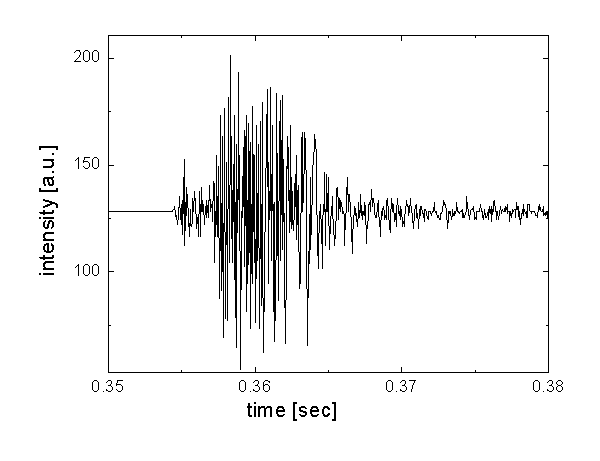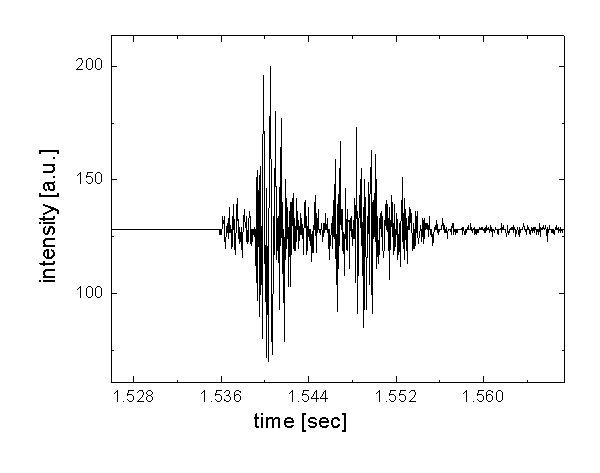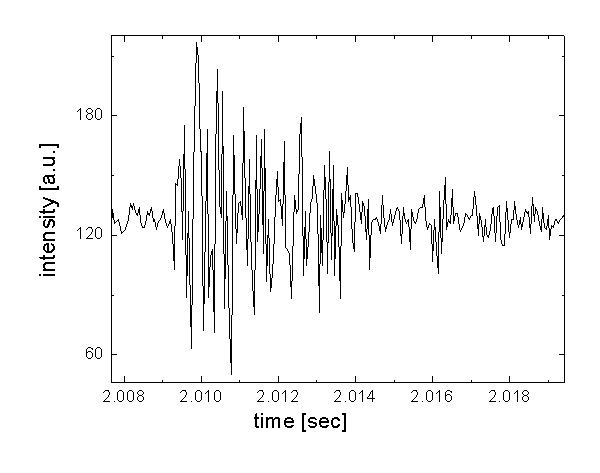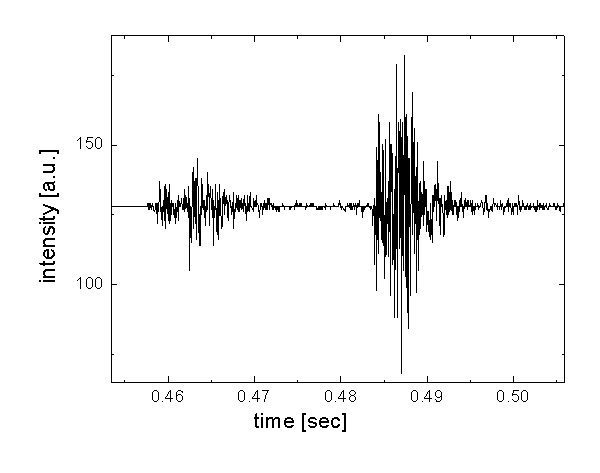

This example shows the 1/125 sec of a Canonet QL17 GIII. Here, two peaks can clearly be discerned, and the exposure time seems to be right on the spot. (The time scale increment of 0.008 sec corresponds to 1/125 sec).



|
The copyright of all images shown
on this page is owned by M. Feuerbacher.
|
by M. Feuerbacher, 2003.
With a commercial device the measurement of exposure times is easy and straightforward. However, the cost of such a piece of equipment may easily be higher than the current value of the camera to be checked. Hence it is useful to look out for cheaper possibilities.
In the present article, I describe the measurement of exposure times with an ordinary PC sound card. Two different approaches are shown, one of which can be applied ad hoc, while the second requires some cheap electronic parts and some soldering. The first method, which is very simple, works well for long exposure times.
1. Measuring exposure times acoustically
This is really simple. Record the shutter sound of your camera (using a simple microphone and the windows wav recorder). Save the sound file as .wav file and analyze it with an appropriate piece of data analysis software. What I use is Origin, which I use for my work as well.
Here are some results:
| This is the nominal 1/30 sec of a Ricoh 500 G. Two peaks, which are due to the opening and closing of the shutter can clearly be identified. The exposure time is the time between the peaks, and the present example yields a result of 1/23 sec. Not too far from the nominal value. |  |
| This is the nominal 1/500 sec of the Ricoh 500 G. Obviously this spectrum can not reliably be analyzed, too much is happening in the camera during, before and after the exposure duration. |  |
|
This example shows the 1/125 sec of a Canonet QL17 GIII. Here, two peaks can clearly be discerned, and the exposure time seems to be right on the spot. (The time scale increment of 0.008 sec corresponds to 1/125 sec). |
 |
| The 1/500 sec of the Canonet can also not be resolved. |  |
| This picture shows the 1/1000 sec of a Leica M6. It is very intriguing since, although two peaks can be discerned, the first one has nothing to do with the shutter curtains. The right signal burst is much broader than 0.001 sec. I know, however, that this shutter speed in my M6 is OK, so the conclusion is that the sound analysis does not work here as well. |  |
The conclusion to this excursion to acoustical shutter speed testing is that the method works fine for small speeds, up to say 1/125 sec or maybe even 1/250 sec. The applicability depends on the shutter type and the camera mechanics. The big advantage of the approach is that it is extremely simple and fast. I do this with my notebook with the built in microphone and the slow-speed analysis is finished within 2 minutes.
2. Measuring exposure times using a Photodiode.
Well....